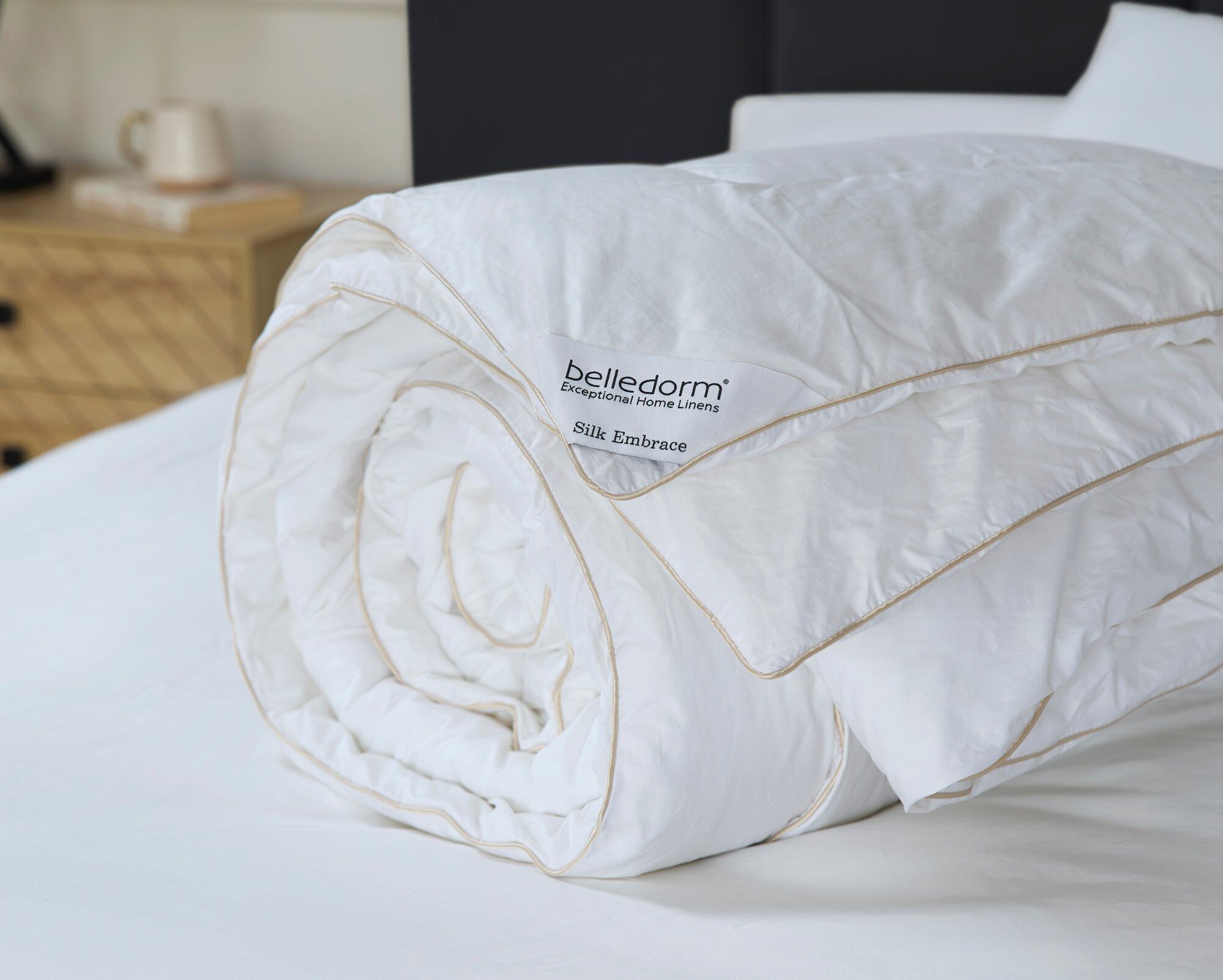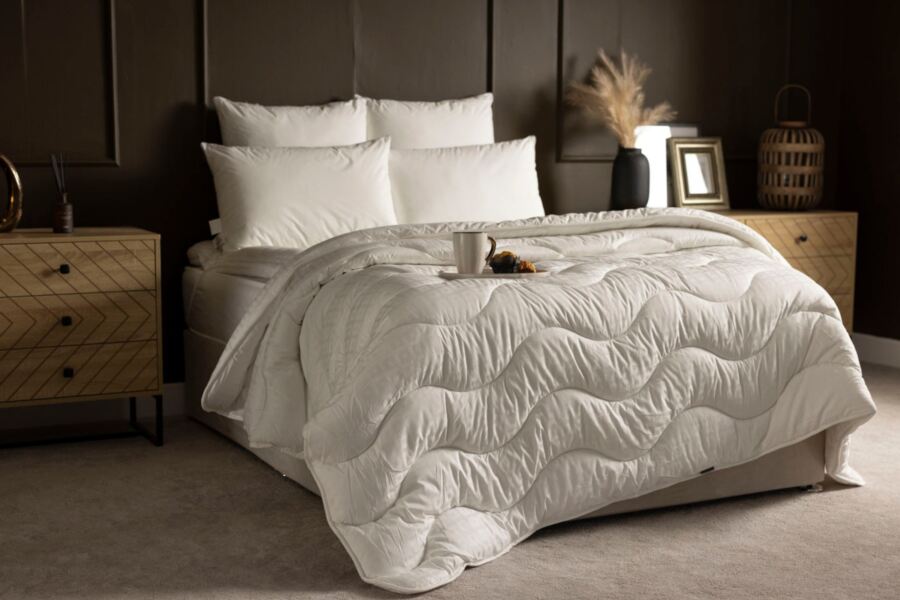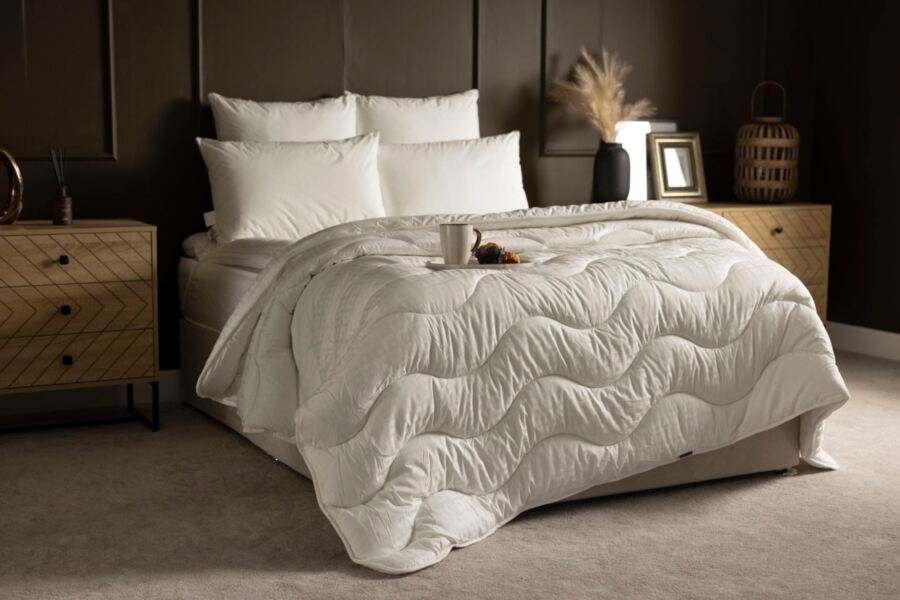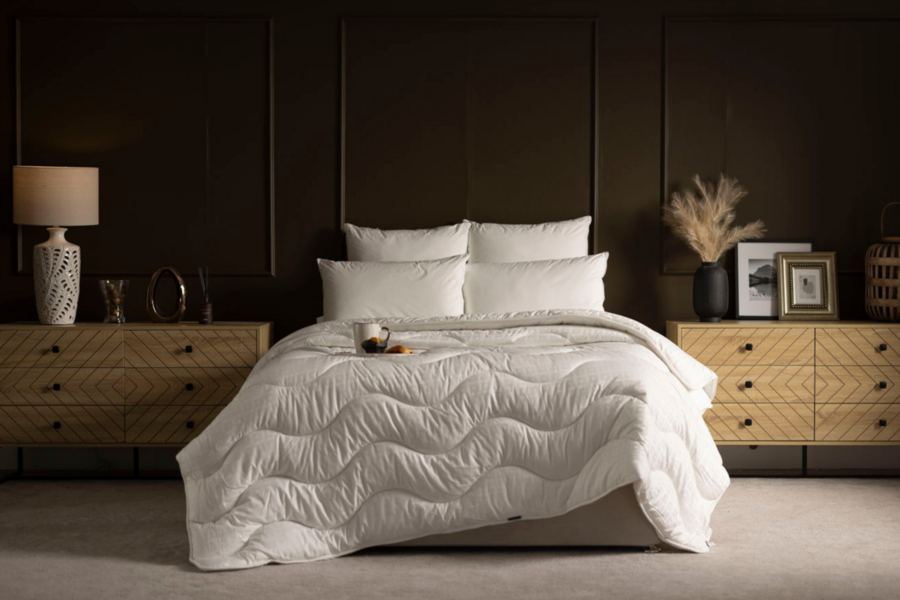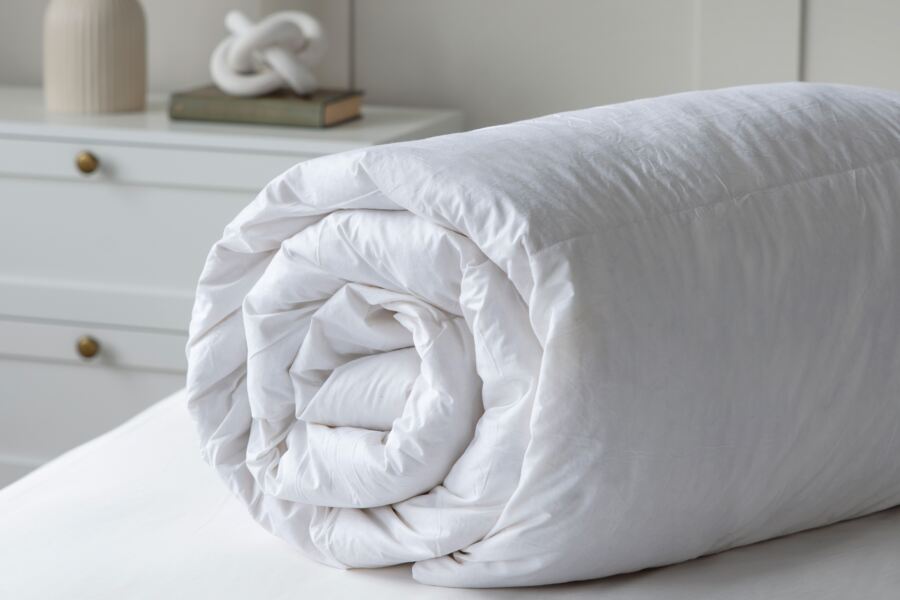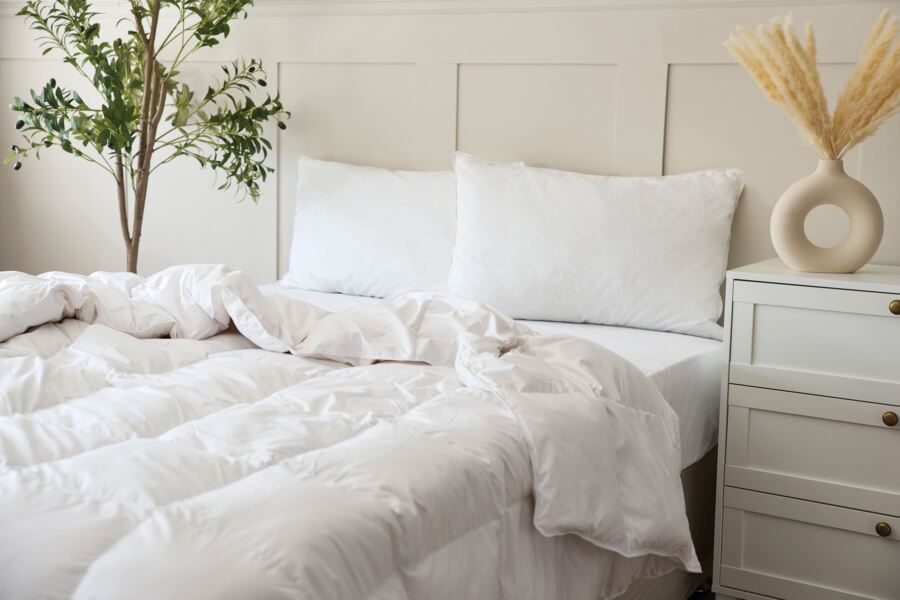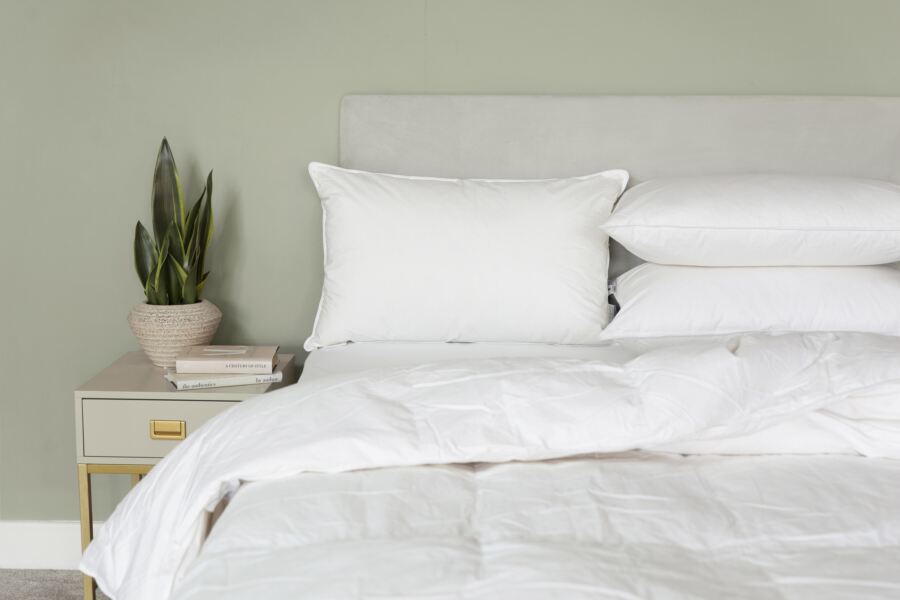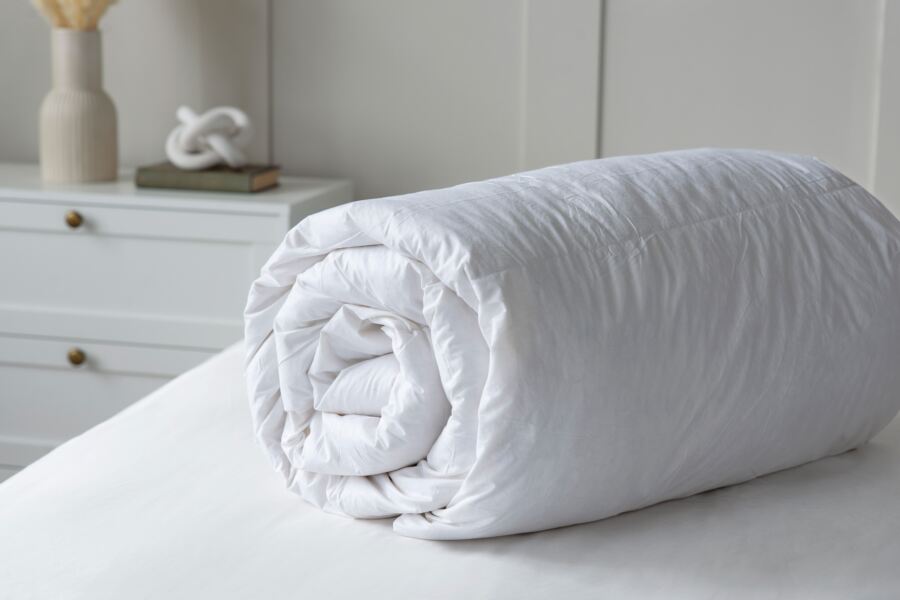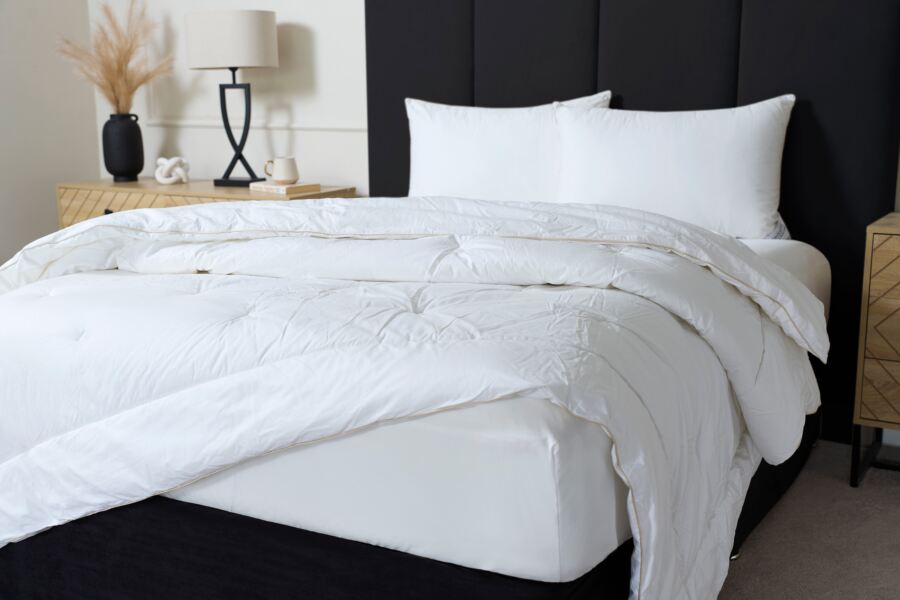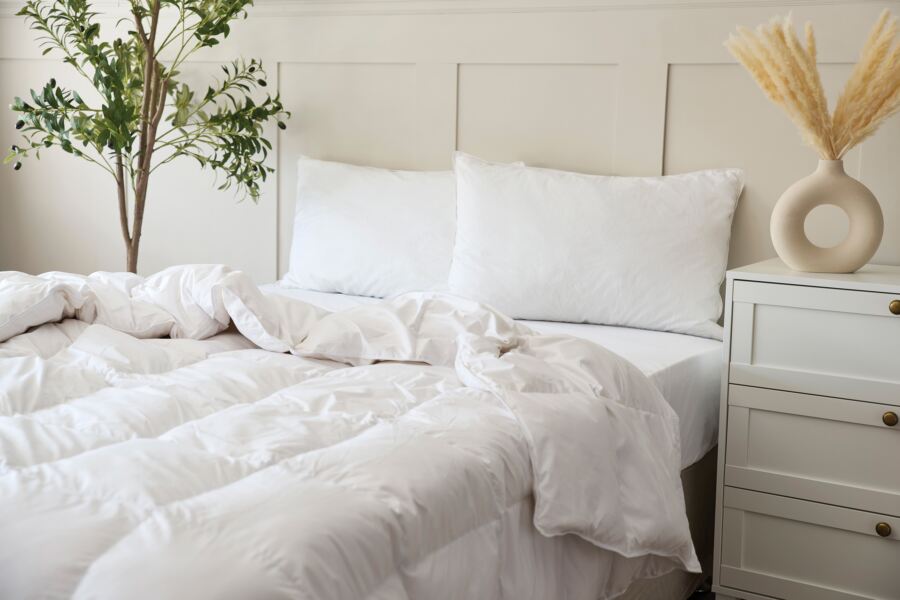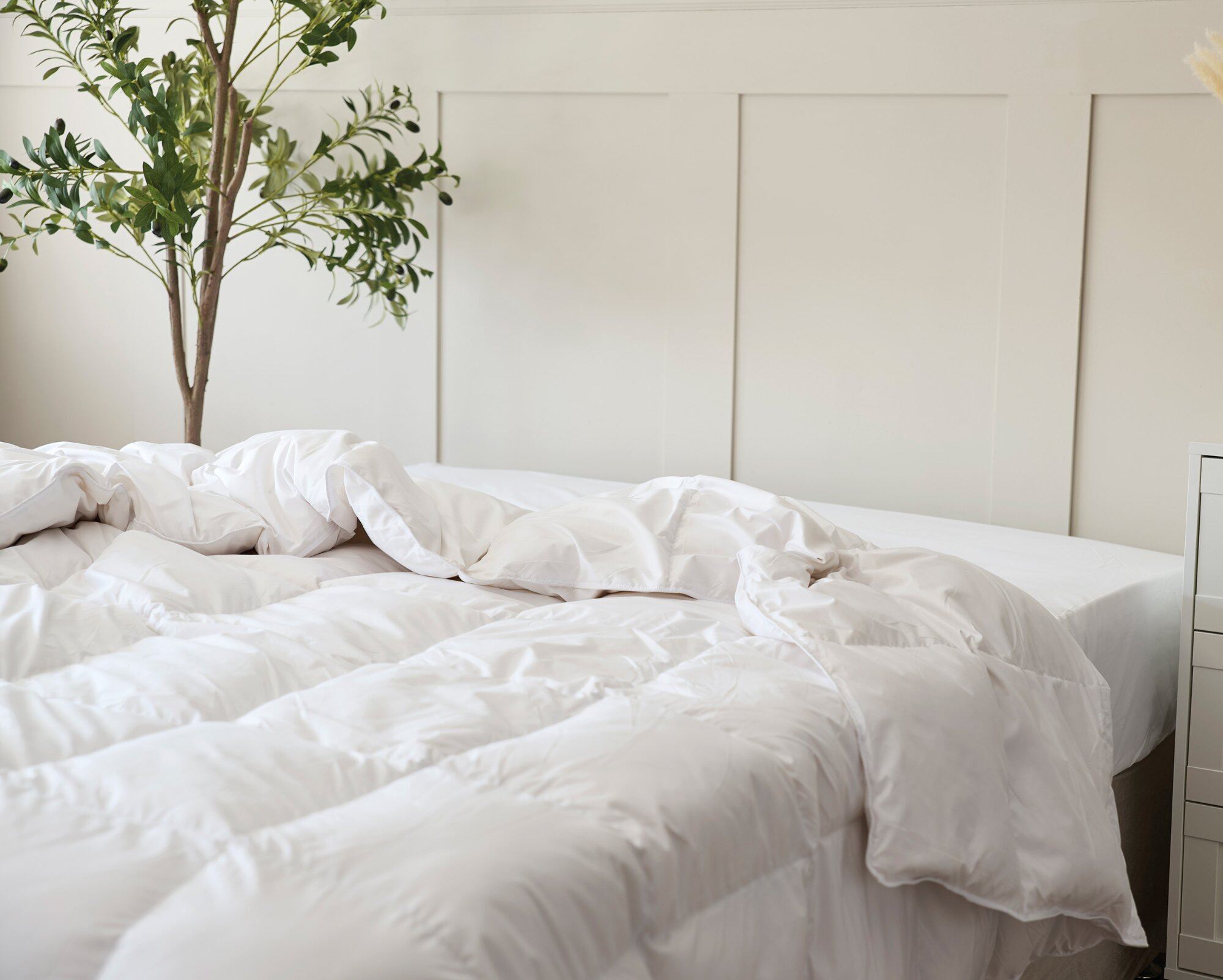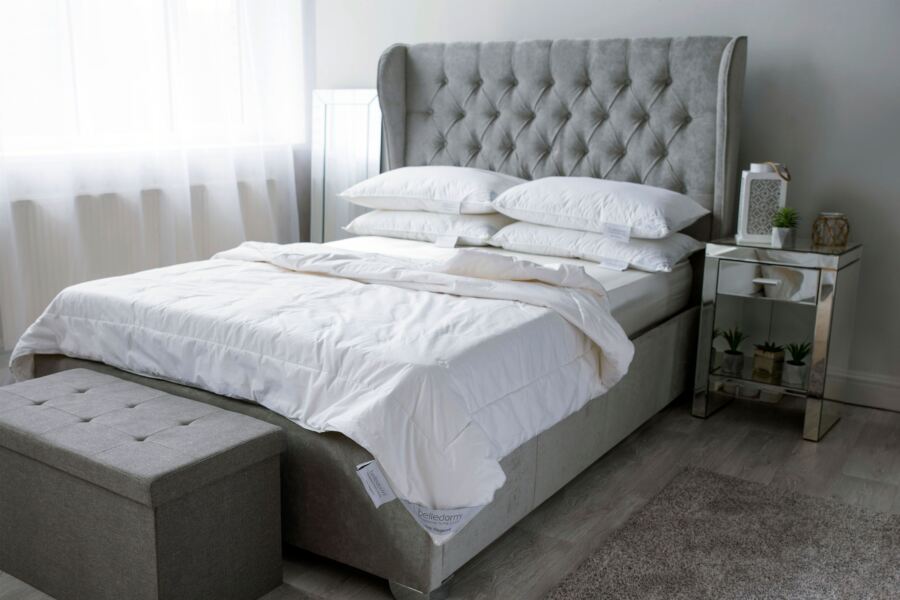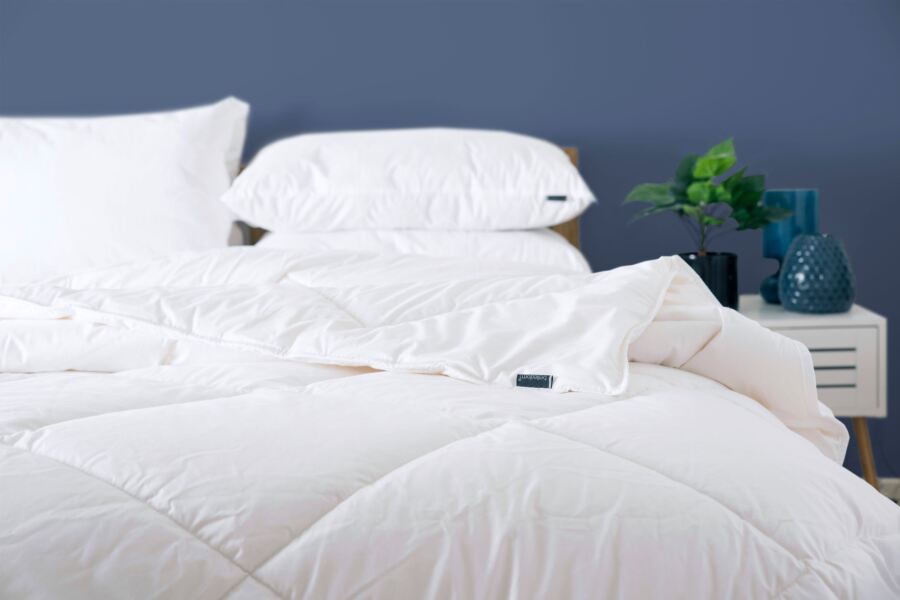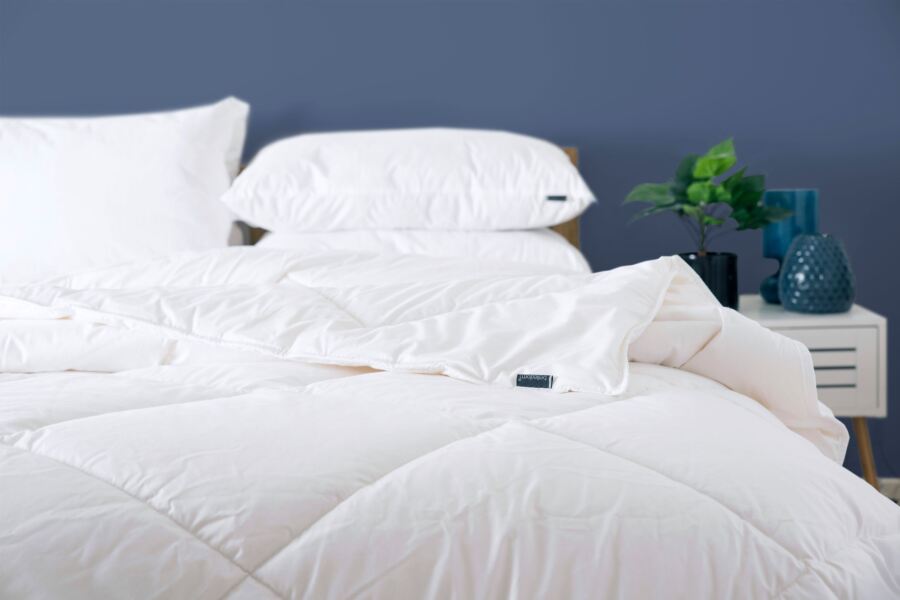Table of Contents
Getting a good night’s sleep depends on more than just a comfy mattress or the right pillows. Your duvet plays a huge part in how well you rest and how comfortable you feel at night.
But how do you know which duvet will work best for you?
From warmth levels to materials, there’s a lot to think about. The best duvet keeps you snug without making you too hot and matches your lifestyle and preferences.
This guide will walk you through the key things to consider, like size, filling, and what suits different seasons, so you can find a duvet that feels just right.
Factors to Consider When Choosing a Duvet
To avoid buyer's remorse and get the best night's sleep possible, consider these important factors:
Tog rating
The first thing to look at is the tog rating, which tells you how well a duvet traps heat and keeps you warm.
Lower togs, usually between 2.5 and 4.5, are light and breathable, making them ideal for summer or hot sleepers. Higher togs, typically from 10.5 to 13.5, provide extra warmth and are better suited for winter months or colder climates.
If you want a versatile option, mid-range duvets around 7 to 10 tog work well in spring and autumn. Knowing what tog rating suits your climate and sleeping habits helps you stay comfortable year-round.
Duvet filling
The material inside your duvet affects how warm, heavy, or breathable it feels. It also impacts the price and how easy it is to care for.
Duvets come in two main types: natural and synthetic. Let's take a look at each.
Natural fillings
Natural fillings, such as down and feathers, are prized for their softness, warmth, and ability to regulate body temperature. They tend to feel lightweight while still keeping you cosy, making them a favourite for luxury bedding.
Some of the most popular natural duvet options include:
-
Silk duvets: Naturally hypoallergenic and breathable, silk duvets are lightweight yet warm, which is ideal for year-round comfort.
-
Down duvets: Soft, light, and insulating, down duvets offer luxurious comfort and excellent heat retention.
-
Feather duvets: More affordable than down, feather filled duvets are heavier but still provide good warmth, though they’re less fluffy.
-
Feather and down duvets: This option combines the affordability of feathers with the softness of down.
-
Wool duvets: Wool naturally adjusts to your body temperature, keeping you warm in winter and cool in summer.
Many people prefer natural options as they are sustainable and aren't made using any chemicals or plastics. The only downside is that natural duvets require professional cleaning, and they are typically more expensive. Some people may also experience allergies to feather duvets, so it’s worth checking before investing.
Synthetic fillings
Synthetic duvets are usually filled with hollowfibre or microfibre, both of which are designed to mimic the feel of natural fillings. They are hypoallergenic, easy to wash at home, and generally more affordable, making them a practical choice for everyday use.
-
Hollowfibre: Hollowfibre duvets are known for being light and breathable. They're easy to maintain and offer reliable warmth.
-
Microfibre: Finer than hollowfibre, microfibre duvets give a softer, more down-like feel.
-
Recycled fillings: An eco-conscious option, these use repurposed fibres to create a sustainable yet comfortable duvet.
Synthetic fillings may not last quite as long as natural ones, and they can feel slightly heavier, but they still provide excellent comfort and great value for money.
Size
Choosing the right duvet size is just as important as picking the right filling or tog rating. A duvet that fits your bed properly looks better and keeps you covered all night.
Common sizes include:
-
Small Single (75 x 190 cm): Best for children or smaller beds.
-
Single (90 x 190 cm): Ideal option for standard, single beds.
-
Small Double/ Queen (120 x 190 cm): Suitable for standard double beds.
-
Double (135 x 190 cm): Provides more width, ideal for couples.
-
King (150 x 200 cm): Offers generous coverage for larger beds.
-
Super King (180 x 200 cm): Perfect for extra-large beds and maximum comfort.
Most people prefer to get a duvet that is slightly larger than their bed so it drapes over the sides, but it’s all about what feels right for you.
Season
You don’t have to swap duvets every season, but doing so can make a big difference in how comfortable you are. Matching your duvet to the time of year helps you sleep better and stay at the right temperature.
Summer duvet
Lightweight and breathable, summer duvets usually have a low tog rating (around 2.5–4.5). They keep you cool on warm nights, making them ideal for hot sleepers or homes that stay warm. These duvets feel airy and prevent you from waking up sweaty.
Winter duvet
Winter duvets, with tog ratings of 10.5 to 15, are designed to keep you warm in cold weather. They trap heat and create a snug, cosy feel, perfect for chilly nights or homes with less insulation.
Spring duvet
Spring duvets strike a balance between lightness and warmth, often ranging from 7–10.5 tog. They provide flexibility during transitional weather when nights can still feel cool but not cold. A good option for households where temperatures fluctuate as winter fades into warmer days.
Autumn duvet
Autumn duvets are similar to spring duvets in weight and warmth, usually around 7–10.5 tog. They help bridge the gap between hot summer nights and chilly winter evenings. This makes them a versatile option for anyone who doesn’t want to change duvets too often.
All-season duvet
All-season duvets are designed to work year-round, usually made of two duvets that can be used separately or clipped together. This lets you adjust the warmth as the weather changes without needing multiple duvets.
Brand
Before buying, take a look at different brands to find one known for quality and good customer service. A reliable brand means you’re more likely to get a duvet that lasts and feels great.
Here at Belledorm, all our duvets offer high-quality fillings and durable construction. Our bedding products combine comfort, longevity, and style, providing you with plenty of reliable options.
Budget
You don’t need to spend a fortune to get a great duvet. Setting a budget before you shop helps you focus on options that give you the best value. While premium duvets can be appealing, there are plenty of affordable choices that still offer warmth, comfort, and durability.
Look out for sales or discounts, especially during off-season periods, to snag a high-quality duvet at a lower price. A smart investment in a good duvet means better sleep without overspending, and it’ll last for years with proper care.
FAQs
What is the best duvet filling?
Most people prefer natural duvets, filled with feathers or down, over synthetic options. Down duvets offer better thermal properties, which means you don't need as much filling to achieve a higher tog rating. This makes them lighter and more breathable.
Is a 10.5 tog duvet warm enough for winter?
If you live in a moderate climate, a 10.5 tog duvet may be sufficient for the cold winter months. However, if you live in a colder country or a home with poor insulation, you'd be better off with a 13.5 tog duvet for a cosy night's sleep. Remember, the higher the tog, the warmer the duvet.
Should your duvet be the same size as your bed?
Aim to buy a duvet that is slightly longer and wider than your bed. Double-sized duvets typically offer the perfect size for double beds, and the same applies to single, queen, king, and other bed sizes. If your duvet is too small, you could wake up with cold feet.
Is it better to get a duvet cover that's too big or too small?
Try to match your duvet cover to the duvet’s size. A cover that is too small will cause lumps and wrinkles, and one that's too big will result in empty pockets and loose fabric. Always check the measurements before buying.
How often should I replace my duvet?
Most sleep experts recommend replacing your duvet every five years or so. However, if your duvet is filled with natural fibres, you won't need to replace it as often. You can also expand your duvet's lifespan through regular washing and proper care.
Conclusion
Choosing a duvet doesn't have to be complicated, but it does require some thought. Focus on the basics: how warm you need to be, what materials you prefer, and what you can afford to spend.
A well-chosen duvet is an investment in better rest and more comfortable nights, so take your time with this decision, and you'll sleep better as a result.

